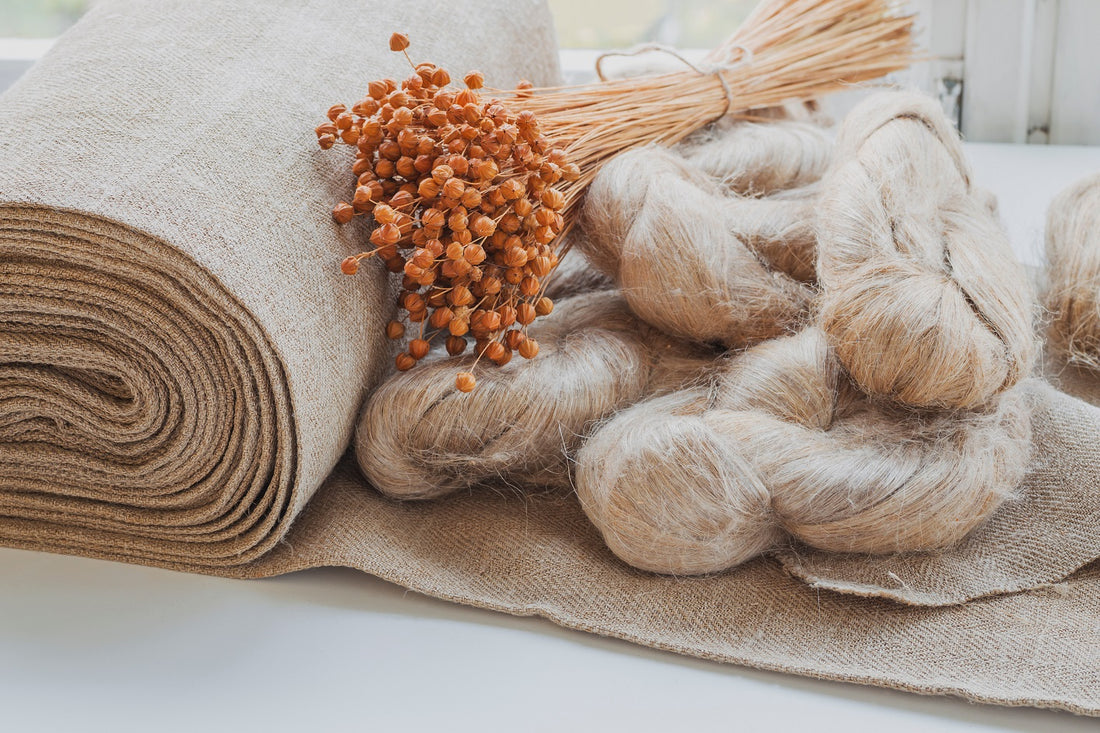The oldest evidence of human use of flax as a textile material comes from the present-day Republic of Georgia, where wild, spun and dyed flax fibers dating back 30,000 years have been found. Humans first cultivated flax in the Mesopotamia region. The use of the crop spread steadily, reaching as far as Switzerland, Germany, China and India by 5,000 years ago. Flax was widely cultivated in ancient Egypt, where temple walls had paintings of flowering flax and mummies were embalmed using flax. Egyptian priests wore only linen because linen was considered a symbol of purity. The Phoenicians traded Egyptian linen throughout the Mediterranean area , and the Romans used it for the sails of their ships. As the Roman Empire fell , the production of flax also decreased . In the 8th century, Charlemagne revived the cultivation of flax fibers to encourage the hygiene of clothing and the consumption of linseed oil. Later, in the Middle Ages, Flanders became a major center of European linen production. In North America the colonists were the ones who brought flax and it became very widespread there, but at the beginning of the 20th century, cheap cotton and rising wages in American agriculture led to the fact that the production of flax was concentrated in northern Russia, which ended up supplying up to 90% of the world production . In the 20th century, flax lost its importance as a commercial crop, due to the appearance and availability of some fibers more durable. Flax is a one-season plant and can grow in a wide range of conditions, although cool, moist regions are most favorable to it . To obtain the fiber, flax can be harvested after the seed is produced or before. The fiber obtained before the seeds are formed is usually of a higher quality . Harvesting flax is often a laborious process with little mechanization to ensure fiber quality. That's why the cost of the linen cloth is higher than the cotton one. The countries that produce the most hemp globally are: China, Italy, Tunisia and Lithuania.
Below I also present 9 benefits of linen fabric, which you may not have known about:
# 1 It's ultra-hygienic
At a time when health and hygiene are of great importance to all of us, this takes the top spot. Linen is known to be hypoallergenic and gentle on sensitive skin, while also being anti-viral.
#2 It is antistatic
It can reduce static from a person's body, meaning unlike other materials like polyester , for example, it won't cling to your body.
#3 It is antibacterial
Linen material works effectively to suppress microflora and pathogenic bacteria while repelling dirt. In fact, linen is considered one of the cleanest fabrics of all because it contains both antiseptic and antibacterial properties that prevent the growth of bacteria. For many years, linen fabrics have been used to make dressings for this very reason.
#4 It can help stimulate healthy blood flow
Due to the harder surface, this type of fabric it achieves a very light massage effect on the skin, which gives us a feeling of relaxation and, in turn, contributes to better blood circulation.
#5 It is very breathable
Nothing is more important than a restful sleep on airy sheets. Flax is a natural temperature regulator, which can keep us cool in the summer months, but also warm in the colder months. It also helps absorb excess moisture, which further aids in a good rest.
#6 It is ecological
The manufacturing process of the fabric is much more environmentally friendly than many of the traditional fabrics used for bedding, and fewer chemicals and less water are used in production. In general, linen has a much smaller environmental footprint compared to cotton.
#7 It is very durable
Unlike cotton, which can yellow or take on more faded colors over time , linen actually becomes more comfortable and softer with use and the passage of time.
#8 It is resistant to odors
Pure linen can actually kill odors and, as mentioned before, works effectively to absorb excess moisture , which is how it helps suppress bacteria and other potentially harmful microorganisms.
#9 It is indicated for those with sensitive skin
I have already mentioned this in a previous point, but it is worth emphasizing that flax is recommended for those with allergies, asthmatics or those with dermatological conditions .

